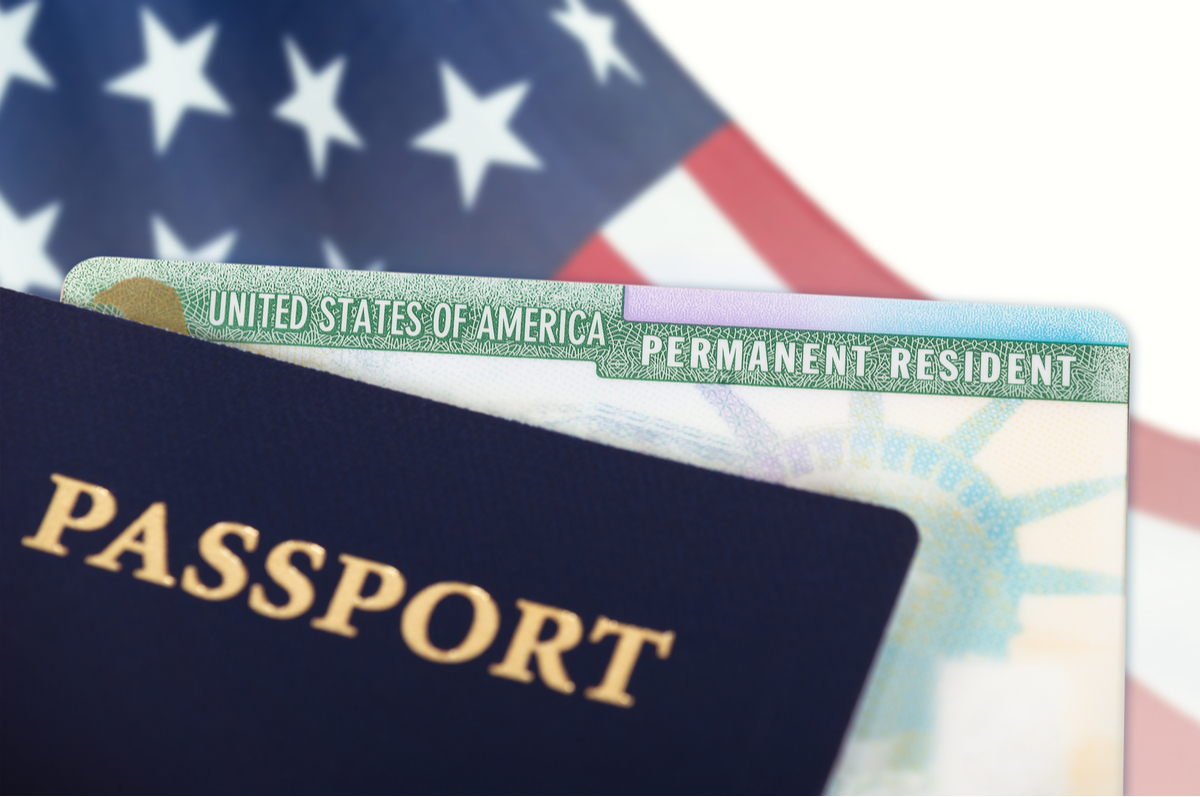 The EB-5 Immigrant Investor Program was created by Congress in 1990 in order to stimulate the U.S. economy through capital investment and job creation. It allows foreign nationals to obtain a green card by investing at least $500,000 in a U.S. commercial enterprise and creating at least 10 jobs for U.S. workers, either directly or indirectly. While there is a common misconception that L-1 and E-2 nonimmigrant visa holders cannot transition to green card status through the EB-5 program, in practice this is not necessarily the case.
The EB-5 Immigrant Investor Program was created by Congress in 1990 in order to stimulate the U.S. economy through capital investment and job creation. It allows foreign nationals to obtain a green card by investing at least $500,000 in a U.S. commercial enterprise and creating at least 10 jobs for U.S. workers, either directly or indirectly. While there is a common misconception that L-1 and E-2 nonimmigrant visa holders cannot transition to green card status through the EB-5 program, in practice this is not necessarily the case.
The E-2 visa is a nonimmigrant investor visa available to nationals of certain countries with which the United States maintains reciprocal commercial treaties. Beneficiaries of an E-2 visa are permitted to enter and work in the United States based on an investment of a substantial amount of capital in a U.S. business. To qualify for E-2 classification, the treaty investor must also be coming to the United States for the purpose of developing and directing the investment enterprise, which means the individual must be an owner, executive, manager or essential skilled worker with the business. The E-2 visa category does not permit dual intent, so an E-2 nonimmigrant visa holder in the United States cannot intend to file a green card petition and remain permanently in the United States.
Even though the E-2 visa category does not permit dual intent, an E-2 investor is not precluded from filing an EB-5 petition at a later date, as long as the capital investment in the E-2 enterprise meets all requirements of the EB-5 program. An individual who is present in the United States on an E-2 nonimmigrant visa may be able to transition to a green card through the EB-5 program by increasing their investment in the E-2 enterprise to $500,000 or $1 million and demonstrating the capital invested will create at least 10 new jobs. All E-2 visa investments will need to be rigorously scrutinized as per the EB-5 requirements to show lawful source of funds and that the investment was a personal one; E-2 investments belonging to the company (rather than the individual investor) or retained company earnings will not count towards the minimum capital investment requirement for the EB-5 green card. However, with careful planning and adherence to the EB-5 requirements early on in the process, it is certainly possible for an E-2 investor to make the transition to an EB-5 green card.
Another popular way for investors and entrepreneurs to obtain temporary employment authorization in the United States is the L-1 nonimmigrant visa. The L-1 nonimmigrant visa allows for the temporary transfer of an employee from a foreign office to an affiliated office in the United States. It also enables a foreign company without an affiliated U.S. office to send an employee to the United States to establish a new office. A foreign national who owns or manages a business outside of the United States (and has worked there for at least one year) can invest capital to start or purchase a U.S. affiliate and transfer to the United States temporarily, as long as the U.S. enterprise has the same ownership and control as the foreign one.
Unlike the E-2, the L-1 is a dual intent visa, so an L-1 beneficiary who is present in the United States can apply to adjust status to permanent resident status. However, like E-2 visas, the L-1 visa beneficiary who is an investor in a U.S. enterprise and plans to increase his investment to meet the EB-5 minimum capital investment requirement of $500,000 must take extra precautions to ensure that he will be able to count his investment when it comes time to apply for a green card through the EB-5 program. As an alternative, managers and executives with L-1A visas who worked in a managerial or executive capacity abroad can also apply for an employment-based green card through the first preference category as multinational managers or executives, as long as the U.S. enterprise has been doing business for at least one year.
Given that the processing times for L-1 and E-2 nonimmigrant visas are significantly lower than the processing time for green cards, entering the United States initially on an L-1 or an E-2 nonimmigrant visa and subsequently transitioning lawful permanent resident status through the EB-5 program can be a viable option for investors with an immediate urgent need to reside in the United States.
We recommend individuals interested in making the jump from nonimmigrant visa status to lawful permanent residence in the United States through the EB-5 program familiarize themselves with the EB-5 capital investment requirements prior to making their initial investment in a U.S. business. It is important to ensure that any money invested in a U.S. enterprise in pursuit of a nonimmigrant visa would also count toward an EB-5 investment at a later date.
|
|
E-2 |
L-1 |
EB-5 |
|
Who? |
Treaty Investor |
Intracompany Transferee Executive or Manager (L-1A) or Specialized Knowledge (L-1B) |
Immigrant Investor |
|
Available to Nationals of Any Country? |
Nationals of treaty countries only |
Yes |
Yes |
|
Amount of Investment Required |
“Substantial” investment of capital[i] |
Sufficient to operate valid foreign business and U.S. office or business entity |
$500,000 or $1,000,000[ii] |
|
Job Creation Requirement |
Some |
N/A |
10 direct or indirect jobs |
|
Visa Validity Period |
Up to 5 years, with option to extend indefinitely if business is successful |
Initial period of 3 years,[iii] with maximum of 7 years (L-1A) or 5 years (L-1B) |
2 year conditional permanent residence, then apply for full permanent resident status |
|
Approximate Processing Time |
~ 3-5 days for consular processing ~ 6 weeks* for change of status |
~ 1 week for Blanket L ~ 2-4 months* for Regular L |
12 – 24 months[iv] |
*Premium Processing available, in which the case will be processed in 15 calendar days.
[i] What qualifies as “substantial” may vary drastically from one consulate to another, but typically ranges from $100,000 to $250,000.
[ii] Congress is expected to increase the EB-5 capital investment amount based on inflation when the EB-5 Regional Center is up for reauthorization at the end up September 2015.
[iii] Unless the L-1 beneficiary entered the U.S. to establish a new office, in which case there is a maximum initial stay of 1 year.
[iv] Because of quota retrogression, China-born EB-5 investors typically need to wait 2 – 3 years after the I-526 petition is approved before an immigrant visa number is available, depending on when the I-526 petition was filed.
DISCLAIMER: The views expressed in this article are solely the views of the author and do not necessarily represent the views of the publisher, its employees. or its affiliates. The information found on this website is intended to be general information; it is not legal or financial advice. Specific legal or financial advice can only be given by a licensed professional with full knowledge of all the facts and circumstances of your particular situation. You should seek consultation with legal, immigration, and financial experts prior to participating in the EB-5 program Posting a question on this website does not create an attorney-client relationship. All questions you post will be available to the public; do not include confidential information in your question.








